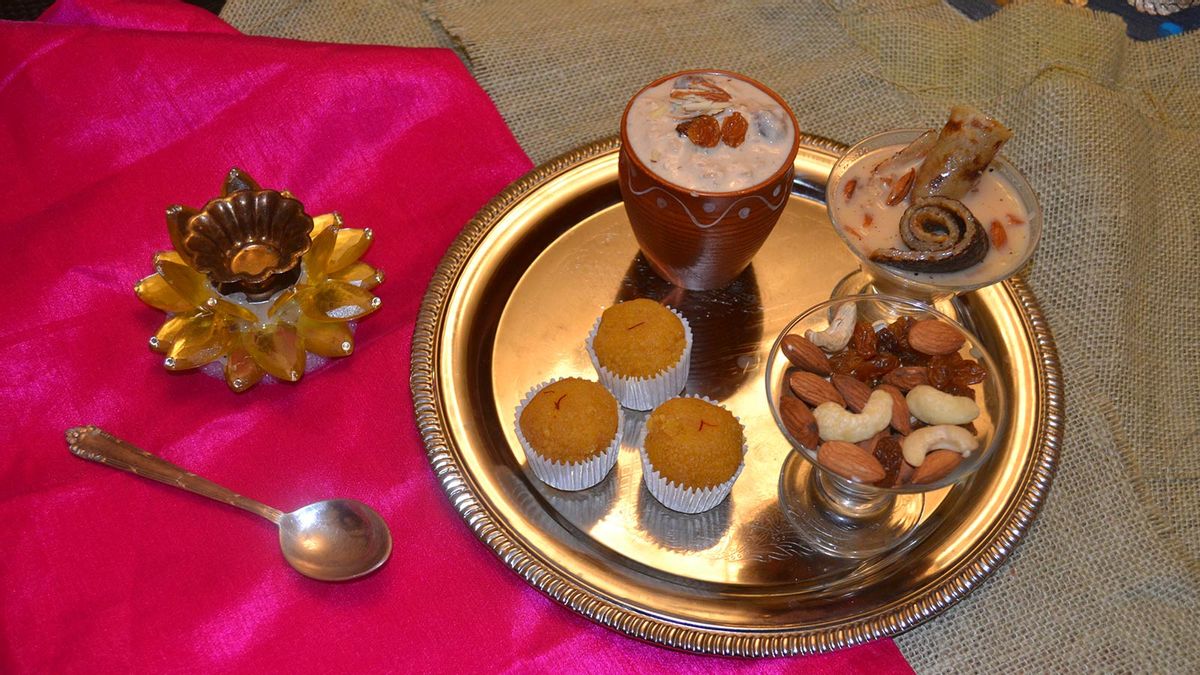The end of Sharad Navratri marks the beginning of another festive season. Married Hindu women of Punjab and other parts of North India, begin preparations for Karwa Chauth, a day of fasting for the welfare of their husbands.
“On the day of Karwa Chauth, the women do not eat or drink water or any other beverages. The day begins early, the women are up before sunrise to nourish themselves before they begin the fast, which ends with the moonrise when they read the Vrat katha and perform puja,” explains Dr Gowri Bhardwaj, a mass communication professor.
According to the Hindu lunar calendar, Karwa Chauth falls on the fourth day after the full moon (Purnima), which is also known as Krishna Paksha Chaturthi.
Though the festival has been part of the festivities that begin with Raksha Bandhan and Janmashtami, in August, Bollywood’s hyper-emotional portrayal of Karwa Chauth has given it a glamorous makeover. From women decking themselves up for the puja, the dramatic entry of the moon, Karwa Chauth parties, to the Sargi thali.
From being one of the minor rituals observed for the day when the mother-in-law presents a few sweets and gifts to her daughter-in-law, the Sargi thali burst on the scene after an emotionally charged encounter in 75 mm about the Sargi thali, between the characters portrayed by Jaya Bachchan and Kajol in Kabhi Khushi Kabhie Gham. The Sargi thali has never looked the same again!
Sargi Thali: What’s in it?
“The Sargi thali is prepared by the mother-in-law and gifted to the daughter-in-law to bless her and, literally, feed her before the fast. It is presented a day prior to Karwa Chauth and essentially comprises the pre-dawn meal that women eat before beginning the fast. Apart from this, it also includes items associated with matrimony –sindoor (vermillion), saree or an item of festive clothing, a sieve (used to gaze at the moon) and a kalash (pot),” shares Dr Bhardwaj.
The food usually (and hopefully) includes the younger woman’s favourites. But there are some items common to all thalis. Scroll down to find out the Sargi thali must-haves:

Fresh Fruits
Since women who observe Karwa Chauth fast through the day, fresh fruits such as oranges, sweet limes and pomegranates in the sargi thali are meant to ensure they stock up on these in the pre-dawn meal. Fresh fruits have fibre and high water content that ensure they stay hydrated throughout the day.
Dry fruits
Dry fruits such as cashews, almonds, raisins and pistachios are offered in the Sargi thali. They are rich in dietary fibre which slows down the release of glucose into the blood and keeps you feeling full longer. This makes dry fruits are an ideal food for fasts and they cut down hunger.
Sweets
Everybody needs a little sugar rush to get through a difficult day. Plus, sweetmeats and sweet dishes are considered auspicious and no Indian festival is complete without them. Traditionally, the Punjabi Sargi thali has feniyan (thin vermicelli) or kheer made with feniyan.
Snacks
“In Punjab, our Sargi thali is incomplete without mathri,” adds Bhardwaj. Apart from this, there are rotis, a vegetable dish and some light snacks. One has to ensure that the food in the Sargi thali is not too rich or spicy so the women do not feel any discomfort or battle gut issues throughout the day.
The Legend of Karwa Chauth
There are many stories associated with this day, to the point of blurring the lines between tradition and superstition. In recent years, the conversations around the festival have thrown up varied views—the more liberal section of society views Karwa Chauth as a tradition steeped in patriarchy, making it the trending hashtag on social media, for polar-opposite reasons.
On the one hand are men and women who believe the festival propagates a patriarchal view of marriage, shackling women in traditions that do not empower them with the idea of equality in marriage, and on the other are those who view the festival as a day to deck up and bond with other women.
In Karwa Chauth folklore, the most famous story is that of Queen Veervati. According to Beenu Bimal, a Kanpur homemaker who has been observing the fast for over 10 years, “Veervati was the only sister among seven brothers. After she was married, Veervati visited her parents for her first Karwa Chauth. On the festival day, she observed the fast, as per the tradition, but was overtaken by hunger and thirst by the evening. Watching Veervati desperately wait for the moon to rise, her brothers decide to relieve her suffering and hang a mirror on a peepul tree to resemble the moon. A gullible Veervati, believing she has spotted the moon, ends her fast. Soon after, her family receives news of her husband’s demise.”
A grief-stricken Veervati cannot believe the turn of events, “It is said, that night a goddess appeared before her. Veervati relates her story to the goddess who suggests she observe the fast again. Touched by her dedication and love for her husband, Yamraj, the god of death, brings her husband back to life,” adds Bimal.




